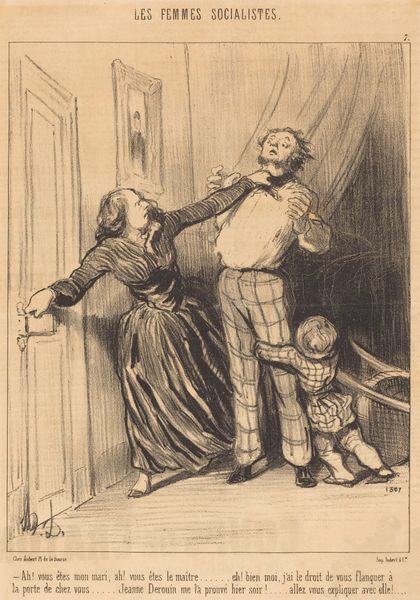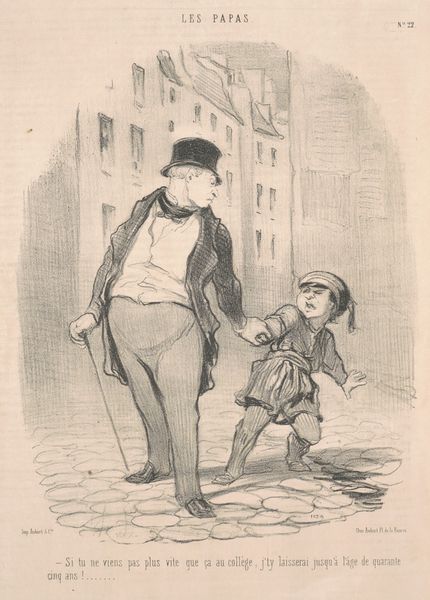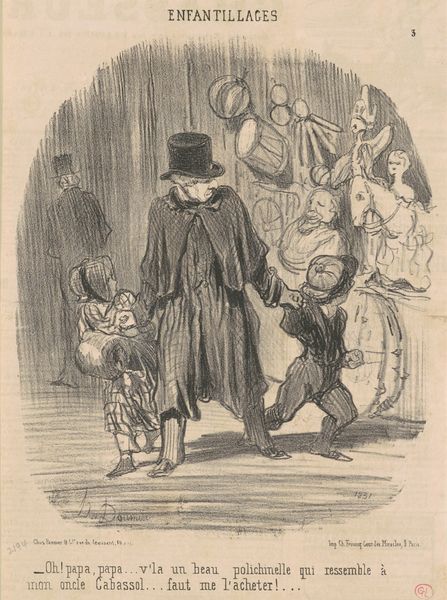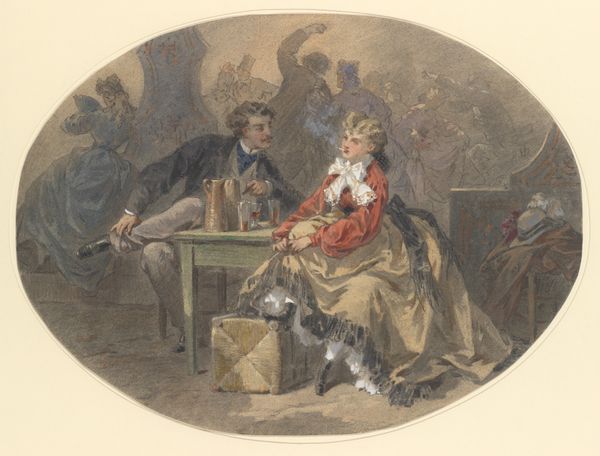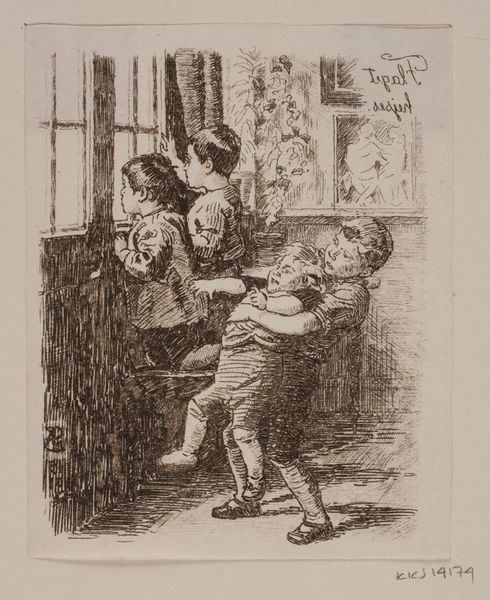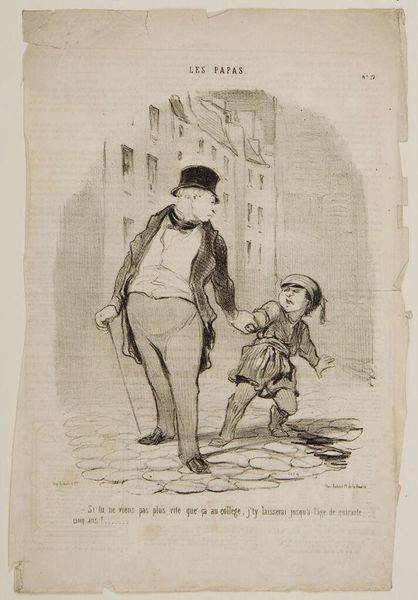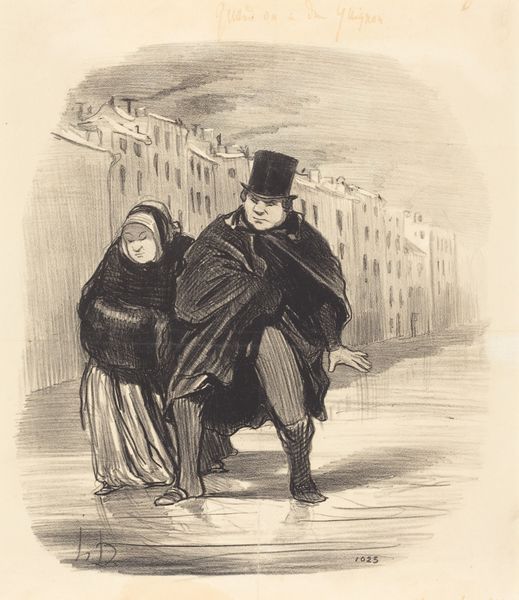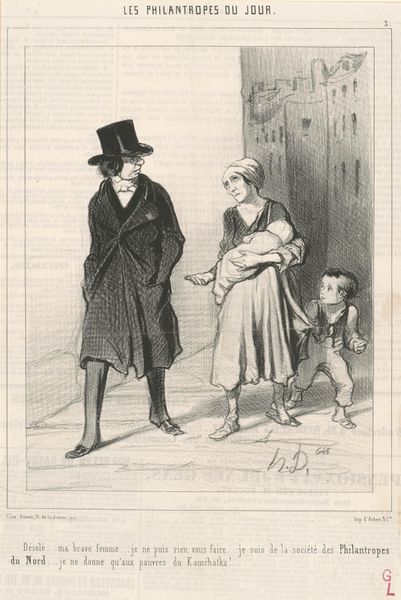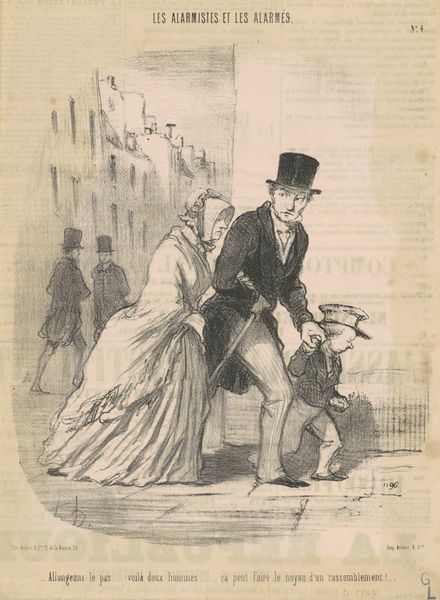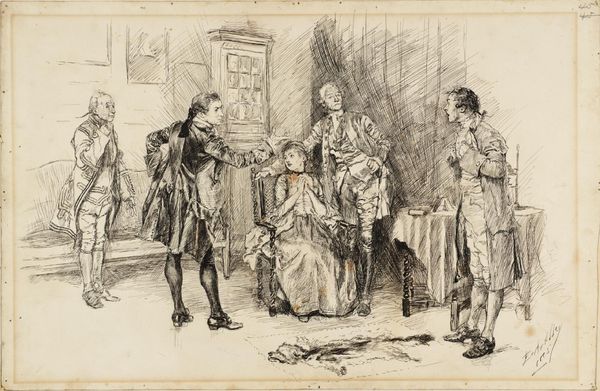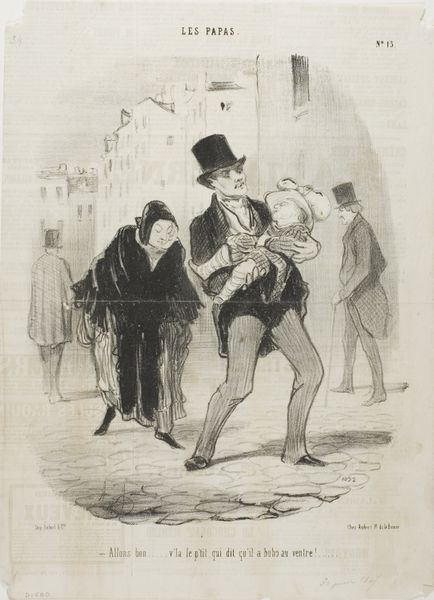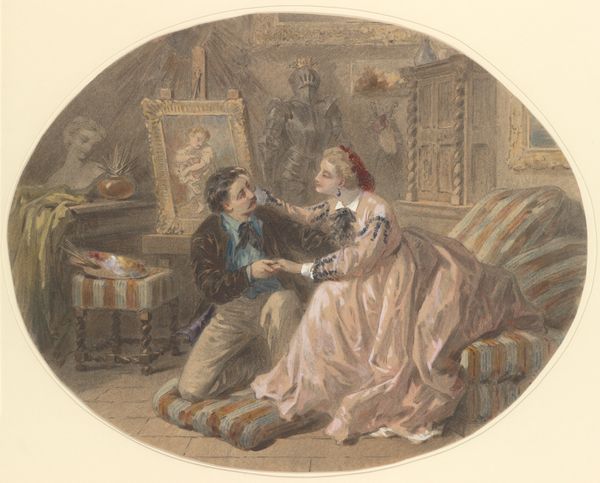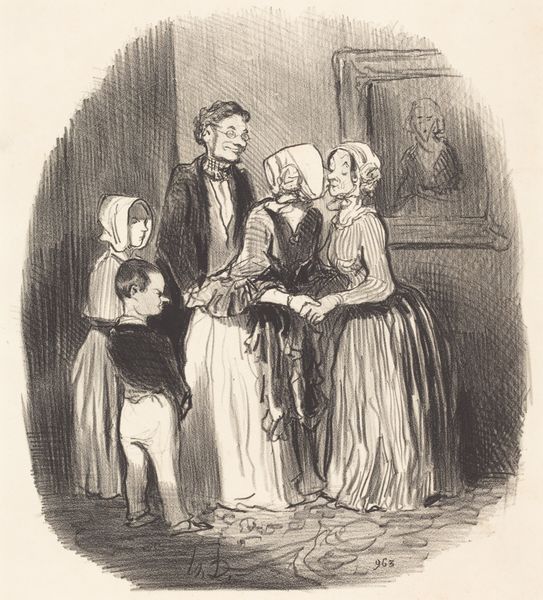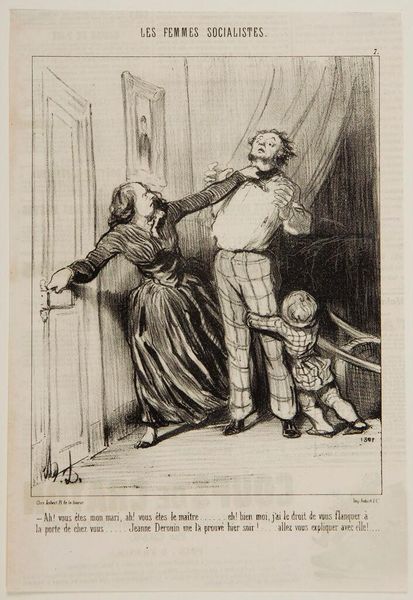
Copyright: Public Domain: Artvee
Curator: Looking at William Powell Frith’s 1863 work, "The Crossing Sweeper", one can immediately note its delicate watercolor rendering of a bustling London street scene. Editor: Oh, my! Isn’t it just heartrending? The way that girl, almost a woman, gazes slightly upwards—and that ragged little sweeper boy! They seem caught in completely different orbits, despite being so physically close. Curator: Indeed. The artwork encapsulates the stark class disparities of Victorian London. Frith, known for his narrative paintings, masterfully uses this seemingly chance encounter to reflect deeper societal tensions. Editor: And it feels so immediate! Almost as if Frith was sketching live, capturing not just appearances but also the inner states of the people portrayed. The very air of the city feels heavy with unfulfilled dreams. Curator: It’s interesting how Frith subtly critiques the social structure through the positioning of his subjects. The sweeper boy, his feet bare, gazes at something we can't see—hope, perhaps? While the young woman, adorned in finery, is nonetheless trapped in her own gilded cage, unable to fully connect. Editor: It makes me think of those birds you sometimes see hitting against a window. The light's right there, but they just can't break through. The detail! You can almost feel the damp chill on the grimy streets, or that young woman's discomfort as she pauses before what can only be described as extreme poverty, embodied in that child, standing on the street right there. Curator: And we must remember the historical context: the role of the crossing sweeper was a relatively new one in rapidly urbanizing cities, a symbol both of burgeoning capitalism and increasing social stratification. It was, in its way, a visible attempt to keep the privileged from soiling themselves by contact with the actualities of London, to offer some level of ease for the rich during an era where a significant portion of London struggled to subsist. Editor: Ultimately, it's a painting that prompts more questions than answers, I think. It hangs in the balance somewhere, a portrait of lives barely connecting in plain sight. Curator: Precisely, it asks us to reflect on who occupies the same spaces, the narratives they carry, and the intricate social machinery at play even in the most ordinary scenes.
Comments
No comments
Be the first to comment and join the conversation on the ultimate creative platform.
